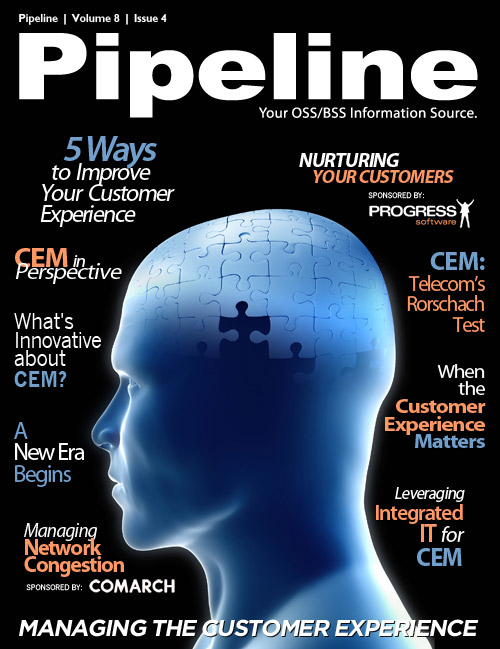By: Tim Young

Elsewhere in this issue, I explored the question of what CEM is and isn’t. I freely admit, however,
that that particular question is purely semantic in nature. At the end of the day, what’s important is
improving the experience of your end users. Fortunately, there are a million ways of doing just that. I
wanted to take a moment to run through a few of our favorites.
1) You’ve got the data: Use it.
The beauty of being a service provider, and not an over-the-top play or some other interested party,
is that you’ve got an unbelievable amount of information at your disposal. You know and understand
where customers go, what their usage patterns are, and lots of other useful bits and pieces about their
behavior. But what’s the point of having that data if you aren’t putting it to work for you?
“Despite the fact that the carriers have invaluable customer data at their disposal, they remain
stubbornly network-focused rather than using this information to become more customer-centric
organizations,” said Brian Carroll, CEO of solution provider Arantech. While many operators comb
through the data in real time, looking to find and fix faults as quickly as possible, there are other ways
that information can be used. “This data can provide the operator with an endless stream of business
intelligence,” Carroll said, “which can be filtered across all departments within the business from
operations, to sales and marketing and customer care.”
“Reporting tools must work at a business level, so managers don't have to wade through reams of
technical data,” said Richard Thomas, CEO of network monitoring vendor NetEvidence. “They ensure
that an IT system (in and out of the cloud) is a fully auditable environment by providing total visibility of
all services such as networks, VoIP, email and CRM.”
2) Don’t try to be everything to everyone.
One of the truly great customer service stories making the rounds these days is Peter Shankman’s tale
about Morton’s Steakhouse delivering a steak to Newark Airport because he joked about wanting one
on Twitter. (It’s really worth a read, and you can find it here.)
To summarize, Shankman, a social media entrepreneur of some note, tweeted about how nice it would
be if Morton’s met him at the airport with a porterhouse in two hours, directly referenced the Morton’s
Twitter handle in the note, and moved on with his life. When he landed in Newark, a tuxedoed waiter
from Morton’s met him with a steak and a smile. It was a total surprise, and Shankman insists it wasn’t
a stunt and that he wasn’t in on the secret.
It’s a cool story. No doubt about it. But as customer experience consultant Bruce Temkin noted on
his own blog in the aftermath of the steak surprise, this story is great marketing, but isn’t really about
customer experience at all. It’s a marketing story. Morton’s can’t send steak-laden waiters to every
airport filled with hungry travelers. In fact, they’d be wise to never do that exact thing ever again.
There’s little added utility in doing so. It was a great story, but it’s in no way generalizable.

 Shankman calls his steakapalooza the, “best customer service story ever told,” and it is the best story,
but it isn’t the best customer service. The best customer service is repeatable, reliable, and lacks flair.
Theatrics are bad. Trust is better.
Shankman calls his steakapalooza the, “best customer service story ever told,” and it is the best story,
but it isn’t the best customer service. The best customer service is repeatable, reliable, and lacks flair.
Theatrics are bad. Trust is better.
And customers don’t expect Superman. According to Yankee Group survey data, the most important
ingredients, in overall customer experience, are competitive pricing (62%) and network service quality
(53%). 87% want a call center agent who has the authority to fix the customer’s problem, or can get
that authority quickly. This isn’t high art. These are basic expectations.











